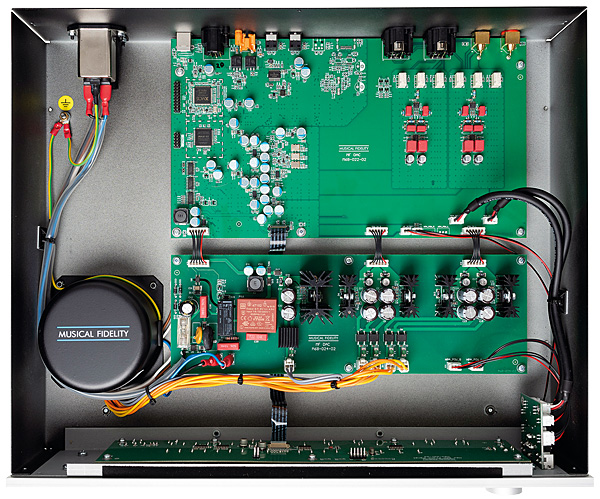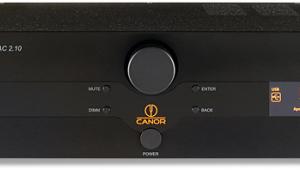Musical Fidelity M6x DAC/Headphone Amplifier

 Thirty-two years after the Digilog set the scene for aftermarket add-on converters, the M6x – the M6 series traceable over a decade – is a no-nonsense DAC for legacy sources
Thirty-two years after the Digilog set the scene for aftermarket add-on converters, the M6x – the M6 series traceable over a decade – is a no-nonsense DAC for legacy sources
Coming from Musical Fidelity's upper-tier M6 series, the M6x is the Austrian company's priciest DAC, and the latest evolution of a product that originated around a decade ago. Of course, there has been plenty of progression through the M6 [HFN Mar '13], M6s [HFN Jan '18] and M6sR models to where we are now, both outside and in, but a few things haven't changed, including the size of the hardware, and the absence of any network streaming.
Considering the prevalence of rival machines around the M6x's £2099 price point that add Wi-Fi/Ethernet connectivity, app control and more to the feature list, this could appear to be a bold move. Yet Musical Fidelity chief (and Pro-Ject founder) Heinz Lichtenegger remains adamant that integrating a network (and/or Bluetooth) module into audio separates will likely endanger their subjective performance.
Double Chips
Therefore, the M6x, in the manner of its predecessors, supports only external sources. Connections are a USB-B input for playback from a computer (Windows drivers are supplied on a CD, but none are required for the Mac OS); twin optical and single coaxial options; and a new-for-this-generation AES/EBU socket. All of which strikes me as more than enough for anyone who isn't desperate to stream direct from a NAS device or smartphone.
The DAC also has a traditional design to go with its traditional feature set. It's not one of the new compact breed, and could never pass for desktop hi-fi. The full-width chassis is 10cm tall and extends back 39cm, making it a clear relation to the equally portly phono stage, CD player, preamp, and amp options of the M6 lineup. Yet it carries this size well, with a reassuring build quality and a neat bevelled edge to the milled aluminium fascia. Finish options, like other M6 models, are black or silver.

Most of the M6x's moderate weight is toward the front of the player's chassis where, inside, resides Musical Fidelity's proprietary 'Super Silent' toroidal transformer. This is linked to an 'industrial-grade' AC socket with EMI filter and DC blocker (the chassis claims to have EMI shielding benefits too), and feeds into a custom PCB with 16-core XMOS processor and Altera CPLD (complex programmable logic device) silicon.
The digital-to-analogue conversion stage is where this new model differs most obviously from its forebear, with Musical Fidelity opting for two ES9038Q2M chips, as opposed to the single 'HyperStream II' DAC of the M6s/sR. Format support reaches 768kHz/32-bit and DSD512 through the USB input, and up to 192kHz/24-bit over S/PDIF and AES/EBU. There's also MQA compatibility on all connections, although I rather expect most users will only feed this to the M6x via that USB port.
Leading Lights
Musical Fidelity's original M6 model featured an LCD info display, but it was removed from its successor and remains absent here. The company says this was a 'deliberate decision' because such front-panel frippery can be a distraction from the music listening experience. It has a point, but I would counter that being confronted instead by no fewer than 37 possible status LEDs – I counted – is also disconcerting.
These blue lights keep you abreast of source and digital filter selection, PCM/DSD sampling rate and MQA status, plus variable/fixed output operation. Small buttons provide left/right navigation of source and filters, and another controls standby/mute. There's also a volume control for when the DAC is used with a power amplifier or active loudspeakers, plus a 6.35mm socket granting use of an in-built headphone amplifier.
These keys and lights are easy to understand (notwithstanding that the size of the LEDs is rather squint-inducing), and Tidal users like myself will appreciate the nerd factor that comes from knowing whether your music has earned MQA 'Studio' status or the lesser 'MQA' designation. There's a remote control as an alternative method of operation, but this is also intended for driving the range's amps/source gear and subsequently looks like an explosion in a button factory.

























































